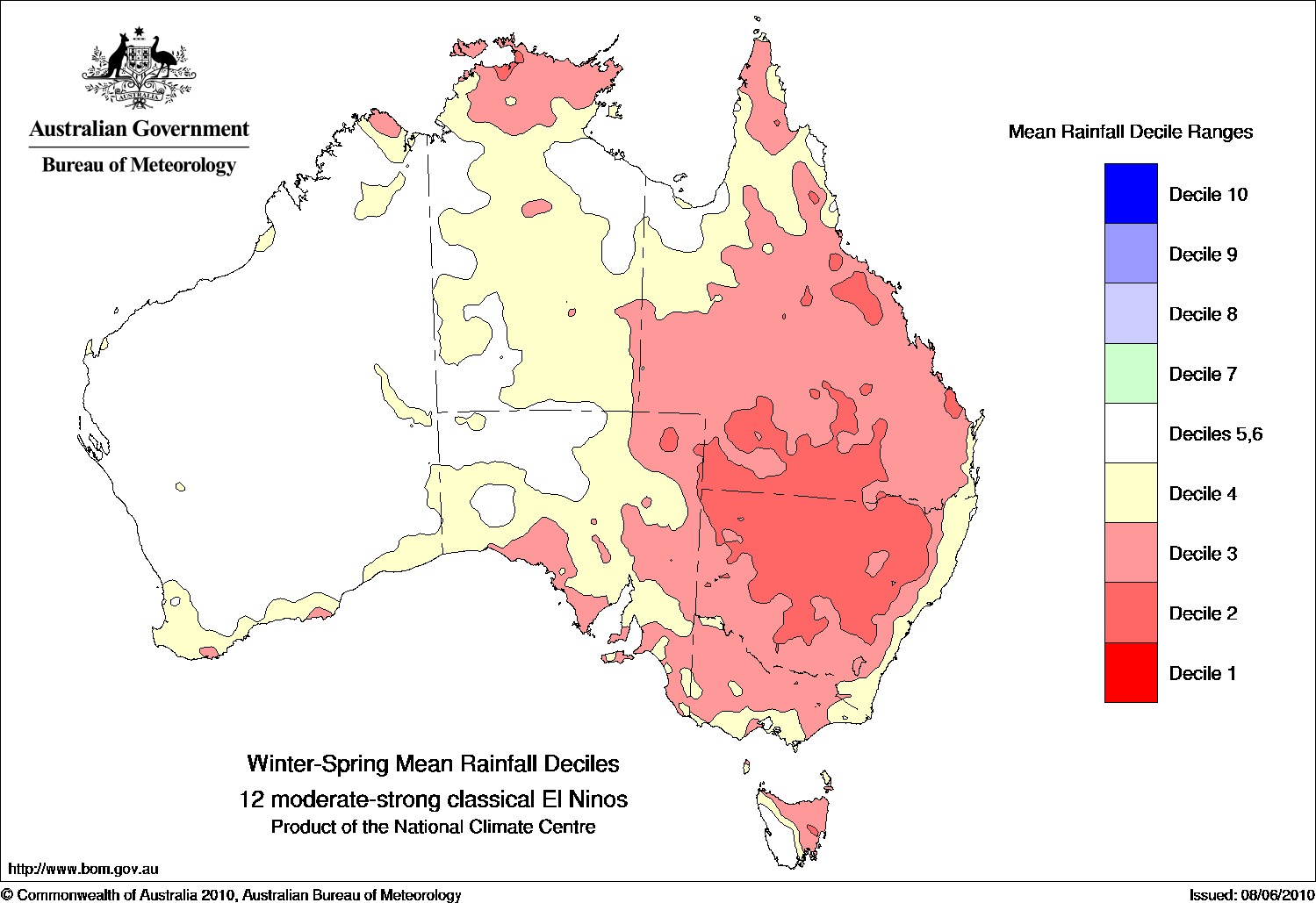What does ENSO mean for Australia?
The El Niño–Southern Oscillation (ENSO) is a feature of natural climate variability based on the strong interaction between the circulation of the tropical atmosphere and the Pacific Ocean. ENSO is an important factor in Australia’s climate and a super star when it comes to influencing global weather phenomena. ENSO naturally swings between three key phases: (1) La Niña, (2) Neutral and (3) El Niño. In Australia, ENSO is often associated with climate extremes, from devastating floods to scorching droughts.
La Niña conditions in Australia mean a higher risk of flooding, lower daytime temperatures and more tropical cyclones. For example, the successive La Niña events spanning 2010–12 were associated with record rainfall over much of Australia and some of the biggest floods in living memory.
In contrast, El Niño conditions mean a greater risk of drought for northern and eastern Australia (see figure below), higher temperatures and more heatwaves, clearer nights and a longer frost season and fewer tropical cyclones. For example, from 1996 to 2010 the Millennium Drought was exacerbated by two separate El Niño events.

Climate change exacerbates ENSO conditions
It is now beyond doubt that human activities – mainly the emission of greenhouse gases from burning fossil fuels (coal, oil and gas) – are driving climate change. Average surface temperature over the Australian continent has increased by 0.9oC since 1910. This continued warming trend is causing severe climate impacts, such as more frequent and intense heatwaves and bushfires, sea level rise, increased coastal flooding resulting from rising sea levels, and pronounced declines in winter and spring rainfall in the southwest and southeast of the continent. These changes to the climate and extreme weather events directly affect our health, communities, infrastructure, economy and livelihoods.
ENSO also causes large changes in rainfall and severe weather, as described above. Things get worse once you superimpose the effects of the natural ENSO cycle on the impacts of climate change. In fact, the latest report of the Intergovernmental Panel on Climate Change reckons that because of the increase in moisture availability as a result of global warming, rainfall variability will likely intensify. The La Niña phase of ENSO will lead to even heavier rainfall and increase the risk of flooding, while the El Niño phase – on its way now – will make heatwaves, severe bushfire weather and dry conditions even worse across eastern Australia. This message was further reinforced by new Australian-led research which found that the global climate is likely to become increasingly susceptible to extremes with super La Niña and El Niño events in the Pacific predicted to almost double in frequency this century (Cai et al. 2015).
To find about more about Australia’s swings between drought and floods, watch this short ENSO animation http://media.smh.com.au/selections/furry-facts-el-nino-and-la-nina-4676981.html or access BoM’s website: http://www.bom.gov.au/climate/about/australian-climate-influences.shtml?bookmark=enso.
Reference
Cai W, Wang G, Santoso A,McPhaden MJ, Wu L, Jin F-F,Timmermann A, Collins M,Vecchi G,Lengaigne M,England MH,Dommenget D,Takahashi K andGuilyardi E (2015) Increased frequency of extreme La Niña events under greenhouse warming. Nature Climate Change, 5, 132–137 (2015). Accessed at http://www.nature.com/